
When was the last time you saw a shooting star? Or just stopped to gaze at the stars on a dark night?
To me there’s nothing like lying on my back on a summer night with a sky full of stars above to bring wonder back into my life and put things into perspective. Our little planet is just one of billions and billions (insert Carl Sagan accent) in the universe. It’s humbling, awe-inspiring, and, when you do see a flash of light blazing across the sky in the blink of an eye, breathtaking.
I’m still floating on the high of my night and early morning with Rose City Astronomers (RCA) watching the Perseid meteor showers, which peak in early-mid August every year in the northern hemisphere. And this year the almost-new moon conveniently slides below the horizon just after sunset for a darker sky.

Star parties aren’t just for Hollywood glitterati. With windows down to let in the warm evening air, I drive east from Portland on Interstate 84 up the Columbia River Gorge to Rooster Rock State Park for the annual RCA and OMSI (Oregon Museum of Science and Industry) Perseid star party. I get there about 9:20 as the western horizon is turning shades of crimson-orange and the stars are just starting to emerge.

Right along the riverbank telescopes of various shapes and size are set up. The most impressive is the reflector telescope that Robert McGown of RCA has set up. A tall, friendly man, Bob patiently answers questions about the telescope and the night sky as people wander by.

By 10 p.m. night has fully descended and the gauzy white Milky Way is visible running north-south above us, against a backdrop of stars bright and dim sprinkled across the sky. Living in Seattle, I can’t remember the last time I saw the Milky Way!
Bob excitedly points out a constellation low on the southern horizon in the shape of a teapot, if you use your imagination to connect the dots (uh, stars). “There’s Sagittarius! That’s one of my favorites.” I love that a long-time stargazer still gets pumped about spotting things in the night sky.
He then points to the really bright star directly overhead, Vega, which is part of the Lyra constellation. As Bob tells me the Greek myth about Lyra, I remember the sky is full of stories that stretch thousands of years back in human history. It makes me feel connected to the ancient Greeks, Arabs, and the whole of humanity over the millennia who have looked up at the night sky in wonder.
“Whooooaaa!” I cry along with several other people as we see our first meteor slip quickly across the sky. A thin white line pierces the black sky and disappears just as quickly. Did I really see that? Over the next hour I count about 15, although I miss several. You can always tell when you miss one because somebody else sees it and whoops or gasps and cries “Wow! Did you see that?”
About 11 p.m. I leave to get a few hours of sleep before my star-gazing continues predawn. Another RCA board member has invited me to join him atop Rocky Butte, an extinct volcanic cinder cone in northeast Portland, to catch the early morning show and sunrise.

Although the alarm goes off at 3:55, by the time I meet Matt at Rocky Butte, the sky is already beginning to lighten toward the long, slow summer dawn. I can barely make out the pointed silhouette of Mt. Hood on the eastern horizon just a tad south of us. We lay out pillows, blankets, and sleeping bags and lie down to watch the sunrise. About four meteors streak across the sky as we’re watching.

I do notice constellations that weren’t visible last night. Orion the Hunter with his three-star belt lies sideways in the eastern sky, pointing up to the Pleiades star cluster, which we can still see for a while before it gets too light.
With elegant Mt. Hood to the east, the Cascade foothills and Columbia River below, Mt. St. Helens to the north, and the Portland-Vancouver area spread out below us, it’s a stunning vista as the sky turns from dark blue to pink to orange to daylight.







What a way to start the day!
When You Go
RCA sponsors numerous lectures and star parties throughout the year, some east of the Cascades where there’s less light pollution. In the Seattle area, the Seattle Astronomical Society sponsors regular lectures and events as well. In Spokane, check out the Spokane Astronomical Society. Go meet some geeks and learn a lot. (I refer to geeks with affection, not mocking! Those guys and gals are a font of information.) If you’re in the Portland area and want to learn more about things astronomical, such as the lore, history, and techniques to locate stars and galaxies or even telescope-making techniques, Bob McGown offers classes. Email him at mcgownrobert@gmail.com.
And ladies, I recommend grabbing your sweetie or guy friend to join you for the Rocky Butte sunrise rather than going alone. You never know who else might be out there. When we got there we saw a jogger, a guy with his tripod set up to photograph the sunrise, and a couple who had a screaming fight in a car below us.








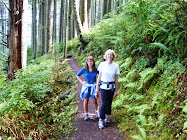

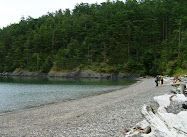
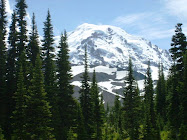


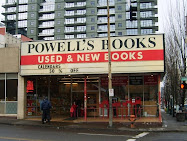
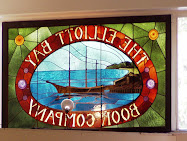


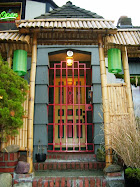


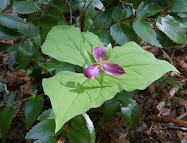

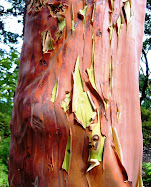

4 comments:
Dear Jill---Thank you, thank you---how wonderful to share views and descriptions about this special "sky setting"! I enjoy your comments and descriptions.
That’s a very, very nice article!!
Cool!
The kids & I did get up at 2am Friday and sat out for awhile - it was fun!
That's an inspiring story - impressed that you made an effort to take in the annual August meteors. We tried from our Seattle backyard and of course it was obscured by trees and lights. bummed. Our family will now contact the Seattle Atronomical Society and we'll prepare for next year - thanks for the idea!
Post a Comment